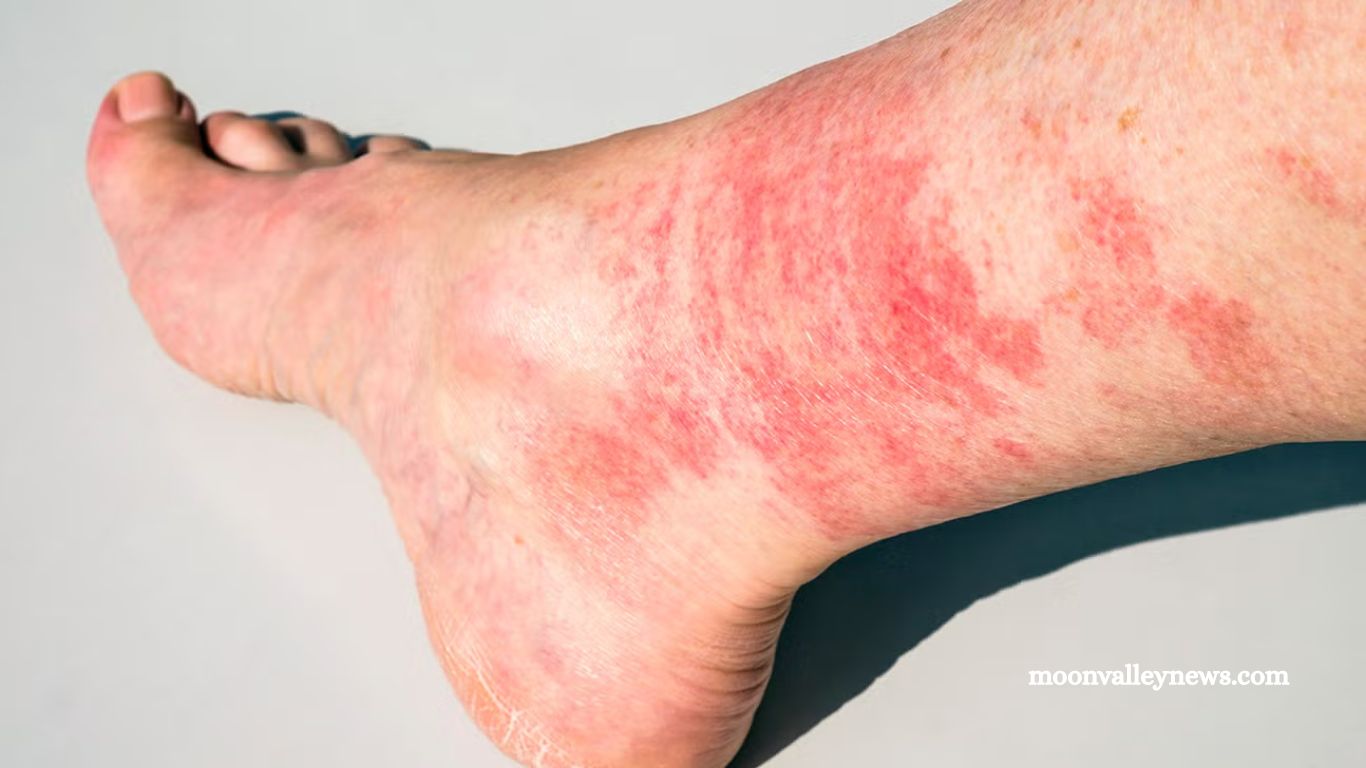If you’ve ever spent a long, sunny day walking around a theme park only to discover a red, blotchy rash on your lower legs, you’re not alone. Commonly referred to as the “Disney rash,” this condition is medically known as exercise-induced vasculitis (EIV). It often affects people who engage in extended periods of walking in hot weather—making amusement park visitors particularly susceptible.
Also known as golfer’s rash or hiker’s vasculitis, EIV isn’t dangerous but can be uncomfortable. Dehydration, heat, and sun exposure are typical triggers. Fortunately, the condition is manageable and preventable with a few simple strategies. In this article, we’ll explore the symptoms, causes, treatments, and best ways to avoid the Disney rash altogether.
Read More: Samsung Teases High-End ‘Ultra’ Foldable for Upcoming Unpacked Reveal
What Are the Symptoms of Disney Rash?
Although commonly called “Disney rash,” exercise-induced vasculitis (EIV) is not a true rash. Instead, it is an inflammation of the small blood vessels, typically affecting the legs. This condition can cause swelling and discoloration on one or both ankles and legs, usually targeting the calves or shins, though the thighs may also be affected.
Symptoms of EIV can include large red patches, clusters of purple or red dots, and raised welts. The affected area may itch, tingle, burn, or sting, but some individuals experience no discomfort at all. Notably, EIV generally appears only on exposed skin and does not occur beneath socks or stockings.
Though uncomfortable, EIV is neither dangerous nor contagious. It usually resolves on its own within about ten days after leaving the triggering environment.
How to Treat Disney Rash
- Use Cool Compresses: Applying wet towels, cold washcloths, or ice packs to the affected area can help soothe irritation and reduce swelling.
- Apply Anti-Itch Cream: Over-the-counter antihistamines or topical corticosteroids can relieve itching. Natural remedies like witch hazel towelettes or specialized itch-reducing lotions may also provide comfort.
- Stay Hydrated: Drinking plenty of water and fluids helps both alleviate and prevent symptoms.
- Elevate Your Feet: Taking breaks with your legs elevated can reduce swelling. This can be done during rest stops, while waiting in lines, or in air-conditioned areas with seating.
- Seek Guest Services Help: Theme parks often have first aid stations stocked with cooling gels and other relief items.
- Soak Your Feet: At day’s end, a cool oatmeal bath can be soothing. Keeping legs elevated overnight may also aid recovery.
How to Prevent Disney Rash
While anyone can develop EIV, women over 50 appear to be at greater risk. To reduce your chances during outdoor activities or vacations, consider the following:
- Protect Your Skin from the Sun: Wearing light clothing such as socks, stockings, or pants shields your legs from direct and reflected sunlight. Sunscreen may offer similar protection.
- Wear Compression Garments: Compression socks or stockings may help prevent recurrence, especially if you’ve had EIV before. Compression leggings or pants are alternatives, though further research is needed on their effectiveness.
- Massage Your Legs: Gentle manual lymphatic drainage massage may improve blood flow and fluid drainage in the legs, potentially reducing symptoms.
- Limit Salt Intake and Stay Hydrated: Drinking plenty of water and avoiding salty foods helps minimize swelling.
- Wear Moisture-Wicking Clothing: In humid conditions, moisture-wicking socks and light-colored fabrics can keep skin dry and comfortable, reducing irritation.
What Does Disney Rash Look Like?

The rash can manifest as red patches, purplish dots, or raised welts primarily on the lower legs. It typically affects exposed skin areas but spares covered parts such as beneath socks.
What Else Could It Be?
Other skin conditions that may appear during vacations include:
- Heat Rash: Triggered by hot, humid weather and friction, resulting in prickly, red bumps.
- Urticaria (Hives): Raised, itchy welts caused by increased body temperature or sweating.
- Sunburn and Sun Poisoning: Painful, itchy red rashes and blisters caused by excessive sun exposure.
- Contact Dermatitis: Allergic reactions to environmental irritants such as soaps, detergents, or fabrics.
When to See a Doctor
Most cases of Disney rash resolve on their own. However, consult a healthcare provider if your symptoms:
- Are very itchy or painful
- Persist for more than two weeks
- Recur with exercise or outdoor activity
Doctors may perform tests to rule out allergies or other skin conditions and may prescribe antihistamines or corticosteroid creams for relief.
Tips for Staying Cool and Comfortable on Vacation
- Prevent Foot and Leg Fatigue: Walking several miles daily can strain your feet and legs. Choose comfortable, well-fitting shoes with good support, suitable for hot weather. Avoid flimsy sandals during long days but keep them handy for post-walk relaxation.
- Avoid Sunburn: Use sunscreen daily, wear hats and sunglasses, and opt for light-colored, sun-protective clothing.
- Stay Cool: Use handheld fans, personal water misters, cooling bandanas, or cooling vests. Wear moisture-wicking fabrics to keep dry.
- Hydrate Frequently: Drinking water or other hydrating beverages helps your body regulate temperature through sweating and prevents dehydration.
Frequently Asked Questions
What does the term “Disney rash” actually mean?
“Disney rash” is a nickname for exercise-induced vasculitis (EIV)—a skin condition caused by prolonged walking in hot weather, often noticed by theme park visitors.
Is Disney rash only associated with Disney parks?
No. While the term was popularized due to occurrences at Disney parks, EIV can happen at any theme park or outdoor event where there’s prolonged walking in the heat.
Is Disney rash contagious?
No, it’s not contagious. It’s caused by heat, sun exposure, and extended walking, not by bacteria or viruses.
Who is most at risk of developing Disney rash?
Anyone can get it, but women over 50 may be more prone, especially in hot, humid environments.
What are the main symptoms of Disney rash?
Symptoms include red patches, purple or red dots, swelling, and itching—usually on the lower legs.
How long does Disney rash last?
It typically resolves on its own within about 10 days, especially after you leave the triggering conditions.
What’s the best way to treat it?
Treatment includes cool compresses, anti-itch creams, hydration, and leg elevation. Severe cases may require medical attention.
Conclusion
Disney rash, or exercise-induced vasculitis (EIV), may catch many theme park visitors by surprise—but it’s a harmless and temporary condition caused by extended walking in the heat. While it can be uncomfortable, it’s generally easy to manage with simple home remedies like cool compresses, hydration, and rest.
More importantly, it’s preventable with proactive steps like wearing compression clothing, protecting your skin from the sun, and taking regular breaks. If symptoms persist or worsen, medical attention may be necessary. With the right precautions, you can enjoy your vacation without letting Disney rash disrupt your adventure.







